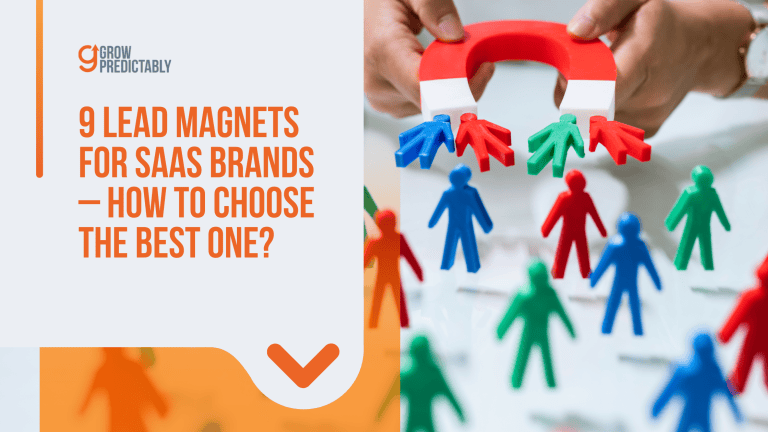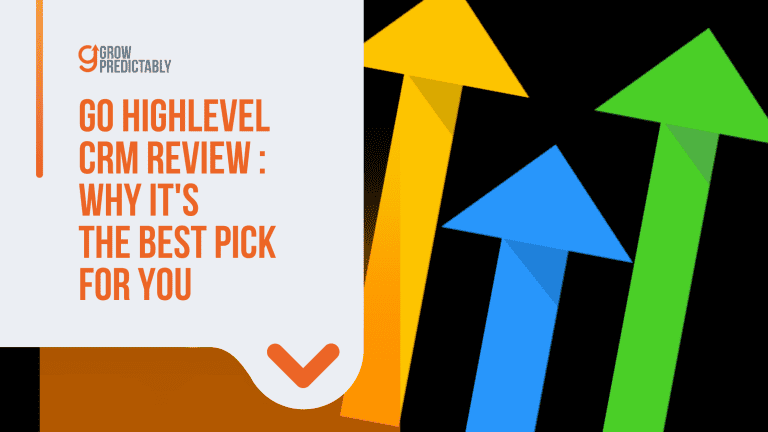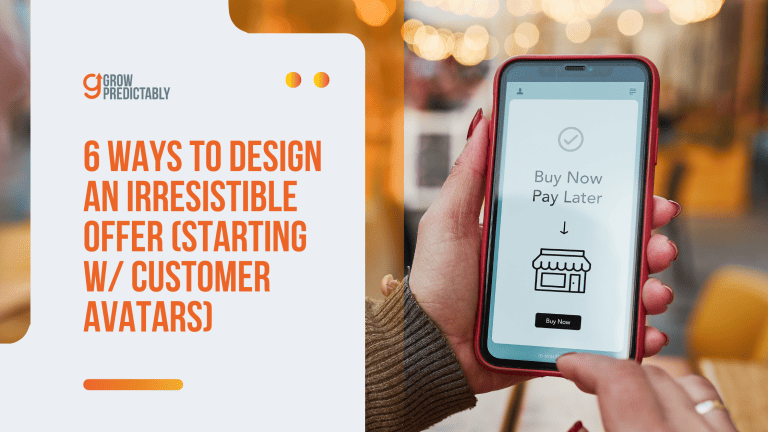How to Document Your Customer Journey for Growth – 3 Proven Strategies
Remember the thrill of going on a treasure hunt as a child? The riddles, the clues, the exciting journey that led to the prize?
Now, imagine your customers jumping on a similar adventure with your brand, where each interaction is a milestone, leading them closer to the treasure – a satisfying experience with your product.
This is not just a childhood game but a critical strategy for business growth – the Customer Value Journey (CVJ).
In today’s highly competitive market, understanding and documenting your customer’s journey can be the difference between a thriving business and a struggling one.
It’s not just about making a sale anymore; it’s about creating a meaningful, engaging experience that turns unaware prospects into loyal customers and brand advocates.
And that’s what we’re here to help you with.
Whether you’re a seasoned marketing professional or a budding entrepreneur, this guide will provide you with valuable insights and practical steps to enhance your customers’ journey and boost your business performance.
Let’s begin!
Understanding the Customer Journey
Ever wondered how a customer goes from “Who’s that?” to “I love this brand!”? That’s the magic of the customer journey.
But here’s the twist – it’s not a straight route!
It’s more like a bustling city with winding streets and hidden corners.
Each interaction and each experience with your brand is like a landmark on this map.
And guess what? Each one matters in helping them decide to choose you.
In every cycle, the customer journey includes the following eight stages as seen in the image below.

Understanding the significance of these stages in crafting your buyer’s or customer’s journey with your brand helps you determine effective strategies that can generate the best results.
With the right strategies, you optimize your efforts without having to exhaust so much of your resources.
With this understanding of the customer journey, you increase the entire business’s efficiency when it comes to generating high-quality leads, using the right marketing messages, boosting conversions, and maintaining a happy customer base.
Scan through the breakdown below and see what each stage of the customer journey is about and how having the right strategies for each can impact business growth.
| CVJ Stages | Explanation | Impact on Marketing and Business Growth |
|---|---|---|
| Awareness | This stage focuses on making potential customers aware of a brand or product, often using advertising, content marketing, and social media. | By increasing awareness, businesses can broaden their reach and introduce their brand to new audiences, thereby starting the customer journey and attracting potential customers. |
| Engagement | Engagement involves interacting with potential customers through compelling content, personalized communication, and valuable information to deepen their interest. | Engaging the audience strengthens their connection to the brand, fostering trust and creating opportunities for increased interest and further interactions. |
| Subscription | At this stage, interested individuals are encouraged to subscribe to email lists or follow social media channels, facilitating direct communication. | This stage allows businesses to capture leads, offering a way to nurture potential customers through personalized and targeted content, driving higher conversion rates. |
| Conversion | Conversion entails turning potential customers into paying customers through incentivized offers, streamlined purchasing processes, and a persuasive call-to-action. | Effective conversion strategies boost revenue and illustrate the success of marketing efforts by moving potential leads to actual paying customers. |
| Excitement | After purchase, businesses aim to excite and delight customers with exceptional product experiences and communication, leading to satisfaction. | Excitement can help reduce buyer’s remorse, increase customer satisfaction, and encourage repeat purchases, laying the groundwork for customer loyalty. |
| Ascension | In this stage, customers are guided towards additional products or services that complement their initial purchase, increasing lifetime value. | Ascension strategies aim to maximize the value of each customer by upselling or cross-selling, thereby increasing the average order value and boosting profitability. |
| Advocacy | Advocacy involves turning satisfied customers into brand advocates who actively promote the brand through word-of-mouth and testimonials. | Advocates can significantly enhance brand credibility and provide powerful organic promotion, often leading to new customer acquisition at a lower cost. |
| Promotion | At the promotion stage, advocates are encouraged to bring in new customers, often incentivized by referral bonuses or special offers for new customers. | Effective promotion by advocates can lead to exponential growth, leveraging their networks for new customer acquisition and widening the brand’s reach. |
These stages, when effectively managed, help businesses nurture their customers through a value-driven journey that enhances long-term engagement, loyalty, and business growth.
What is Customer Journey Documentation?
Customer journey documentation is the process of mapping and analyzing the various touchpoints and interactions a customer has with a business throughout their entire lifecycle.
It’s like drawing a map of every step a customer takes with your business, from the first hello to the last goodbye.
But it’s not just about the steps; it’s also about the feelings and experiences they have along the way.
And why do we do this? Simple!
It gives us a peek into what customers like, what they don’t, and how they feel about our brand, product, or service.
With this goldmine of information, businesses can tweak their strategies to improve customer experience and boost growth.

3 Proven Strategies on How to Document Customer Journey for Growth
Now that you’ve got an overview of the customer journey, it’s time to document it for business growth.
Here are three proven strategies to get you started:
Strategy #1: Customer Persona Creation
Understanding who your customers are is a crucial part of documenting the customer journey.
One effective way to do this is by creating customer personas.
A customer persona, also known as a buyer persona, is a semi-fictional representation of your ideal customer.
It’s based on market research and real data about your existing customers.
When creating a customer persona, you’ll take into consideration customer demographics, behavior patterns, motivations, and goals.
Creating a customer persona can help you understand your customers better.
It will allow you to tailor your content, products, services, and even customer support to meet the specific needs and expectations of different customer groups.
HOW TO CREATE YOUR OWN CUSTOMER PERSONA?
Step 1: Define Your Target Audience
The first step in creating a customer persona is identifying your target customers. This involves considering factors such as demographics, psychographics, consumer behavior, and lifestyle.
Step 2: Conduct Research
Once you’ve identified your target audience, it’s time to delve deeper. This involves conducting qualitative and quantitative research such as surveys, interviews, and focus groups to gather more detailed information about your customers.
Step 3: Segment Your Audience
Based on the information gathered, segment your audience into different groups that share similar characteristics and behaviors. Each group will represent a unique customer persona.
Step 4: Develop Detailed Personas
For each audience segment, create a detailed persona. Include information like age, occupation, interests, pain points, buying motivations, and shopping habits.
Giving each persona a name can be helpful to make them more relatable.
Step 5: Apply Your Personas
Use these personas in all aspects of your business – from product development to marketing to customer service – to ensure your efforts are aligned with your customer’s needs and expectations.
For example, if you’re a fitness brand, you might have ‘Fitness Fanatic Fiona,’ a young professional passionate about health and wellness, and ‘Gym-shy Gary,’ who wants to get fit but feels intimidated by the gym environment.
These personas can then guide your marketing strategies, ensuring your messaging, content, and product development are tailored to the needs and wants of your ideal customers.
By speaking directly to their specific needs, you’re more likely to engage them and convert them into loyal customers.
Customer persona creation is about understanding your customers on a deeper level and serving them in the best possible way.
Enhancing your customer persona creation process can be further achieved by utilizing the Customer Avatar Canvas, a powerful tool designed to deeply understand and categorize customer personas.

This canvas not only captures demographic details but delves into psychographics and behavioral insights, offering a more holistic view of your ideal customers.
The ‘Before/After’ aspect ensures you comprehend the transformation your product or service facilitates for your customers, enriching your persona development.
Actionable Steps with Customer Avatar Canvas:
- Deep Dive into Psychographics: Use the canvas to document not just who your customers are, but what drives their decisions by focusing on fears, aspirations, and lifestyle.
- Visualize the Transformation: Outline the desired change in your customers’ life pre and post engaging with your product, identifying emotional and tangible outcomes.
- Refine Marketing Strategies: Leverage the detailed avatar insights to craft personalized marketing messages, ensuring relevancy and resonance with your target audience.
- Continuous Validation: Regularly update the avatar based on customer feedback and market changes, ensuring ongoing alignment with customer expectations.
Draft Your Ideal Customer With the Customer Avatar Canvas Now!
Strategy #2: Customer Journey Mapping
After creating your customer personas, the next step is to understand how these customers interact with your business.
This is where customer journey mapping comes into play.
A customer journey map is a visual representation of the process a customer goes through to achieve a goal with your company.
It includes all the touchpoints a customer has with your business, from the first point of contact to the final purchase or interaction.
The purpose of customer journey mapping is not just to plot these interactions but also to delve deeper into the customer’s mindset at each stage – their expectations, emotions, questions, and potential barriers to purchase.
By doing so, you can gain a comprehensive understanding of your customer’s experiences, identify potential pain points or gaps in service, and uncover opportunities for enhancing the customer experience.
THE BASICS OF CUSTOMER JOURNEY MAPPING
Define Your Personas Goals: Start by identifying the goals your personas are trying to achieve with your business. These goals will form the basis of your customer journey map.
Identify Touchpoints: List all the points of interaction a customer has with your business. This could include visiting your website, speaking to a sales rep, using your product, contacting customer service, and more.
Map the Customer Journey: For each persona, map out the steps they take to achieve their goal. Include all the touchpoints you identified earlier.
Identify Pain Points: Look for any areas in the journey where customers may be having a negative experience. These are opportunities for improvement.
Implement Changes: Use the insights gained from your customer journey map to make improvements to your customer experience.
Customer journey mapping can provide valuable insights that help your business tailor your marketing strategies, improve customer service, enhance product development, and ultimately cultivate a more customer-centric culture.
It’s about understanding your customer’s journey from their point of view so that you can deliver a better, more personalized experience.
Incorporating the Customer Value Journey (CVJ) framework into your strategy for documenting the customer journey can provide additional value and structure to the mapping process.

The CVJ worksheet, as seen above, emphasizes creating meaningful, stage-specific interactions that drive customer engagement and loyalty across their journey from awareness to advocacy.
By aligning these insights with your customer journey maps, you reinforce your understanding of each phase from the customer’s perspective.
Actionable Steps with the CVJ:
- Identify Stage-Specific Goals: Define clear objectives for each stage of the CVJ, considering both customer expectations and business outcomes.
- Align Touchpoints: Ensure all identified touchpoints in your journey map connect logically with the CVJ stages, providing seamless transitions and valuable interactions.
- Augment Emotional Mapping: Use insights from the CVJ to delve deeper into customer emotions and motivations at each stage, identifying opportunities for personalized engagement.
- Highlight Areas for Value Addition: Pinpoint potential “value gaps” where additional benefits can be introduced to smooth journey transitions and boost customer satisfaction.
- Iterate and Optimize: Regularly revise your map and strategies using real-time feedback, ensuring alignment with evolving customer behaviors and CVJ insights for continuous improvement.
Get Your FREE Customer Value Journey Worksheet Now!
Strategy #3: Feedback Collection and Analysis
The third strategy in documenting the customer journey for growth is the collection and analysis of customer feedback.
This strategy is crucial as it allows businesses to understand how customers perceive their products or services and what aspects can be improved.
Customer feedback comes in many forms.
It could be direct feedback from surveys or interviews, indirect feedback from social media comments or online reviews, or inferred feedback from customer behavior data.
HOW TO EFFECTIVELY COLLECT AND ANALYZE CUSTOMER FEEDBACK?
Identify Feedback Channels: Determine where you’ll collect feedback. This could be through customer surveys, social media platforms, customer service interactions, or online review sites.
Collect Feedback: Use the identified channels to gather feedback. You can streamline this process using tools like online surveys, feedback forms, or social listening software.
Analyze Feedback: Once collected, analyze the feedback to identify patterns, trends, and areas of improvement. Use qualitative analysis for open-ended feedback and quantitative analysis for numerical or rating-based feedback.
Put Changes into Action: Based on the analysis, implement changes to improve your products, services, or overall customer experience. Then, continue to collect feedback to assess if these changes are effective.
Once you’ve collected this feedback, it’s time for analysis. Look for common themes or patterns in the responses.
Are customers consistently mentioning a particular feature they love? Or perhaps there’s a recurring issue that’s causing frustration.
This information is invaluable, as it provides real, actionable insights into what’s working and what needs improvement in your customer journey.
By strategically implementing feedback mechanisms, businesses can gain detailed insights into customer perceptions and satisfaction levels, which are essential for growth and improvement.
Actionable Steps for Feedback Collection and Analysis:
- Diversify Feedback Sources: Implement a mixture of feedback channels – engage customers through surveys, monitor social media interactions using advanced social listening tools, and review online customer comments to gather comprehensive input.
- Regularly Schedule Feedback Collection: Make feedback collection a continuous process. Set periodic schedules for sending surveys or conducting interviews, allowing for a steady stream of up-to-date customer insights.
- Utilize Technology for Analysis: Leverage data analysis software to efficiently identify trends and patterns in feedback. Use qualitative methods for open responses and statistical tools for quantitative feedback.
- Close the Feedback Loop: Communicate the changes and improvements made based on customer feedback, showing customers their input values, fostering loyalty, and encouraging ongoing engagement.
Why Document Your Customer Journey?
To Understand the Customer’s Perspective
By mapping out the customer journey, businesses can gain a deeper understanding of their customer’s needs, motivations, and challenges at different stages.
This helps in creating more customer-centric marketing, sales, and support strategies.
To Identify Pain Points and Opportunities
Customer journey documentation reveals pain points and areas where customers might face challenges.
Identifying these pain points allows businesses to address them proactively, leading to increased customer satisfaction and loyalty.
To Optimize Touchpoints
By visualizing the entire customer journey, businesses can optimize each touchpoint to ensure consistency and seamless experiences.
This includes website interactions, social media engagement, customer service, and more.
To Enhance Customer Experience
A well-documented customer journey allows businesses to design personalized experiences for customers, tailoring interactions based on their preferences and past behaviors.
To Align Marketing and Sales Strategies
Customer journey documentation helps align marketing and sales efforts.
When both teams clearly understand the customer journey, they can coordinate their strategies to nurture leads effectively and drive conversions.
To Improve Product Development
Understanding how customers use and interact with products or services can provide valuable insights for product development and innovation.
This ensures that products meet the actual needs and expectations of the target audience.
To Boost Customer Retention and Loyalty
A positive and smooth customer journey fosters loyalty and encourages repeat business.
Satisfied customers are more likely to become brand advocates and refer others, contributing to organic growth.
To Leverage Data-Driven Decision Making
Customer journey documentation is based on data, including customer feedback, analytics, and behavioral patterns.
This data-driven approach empowers businesses to make informed decisions and allocate resources more effectively.
To Seek Continuous Improvement
Customer journey documentation is an ongoing process that allows businesses to iterate and improve their strategies over time.
As customer needs and preferences change, adapting the customer journey becomes crucial to stay relevant and competitive.
The customer journey is not static and may evolve over time. Be prepared to adapt your strategies and customer journey documentation as you gain new insights and customer preferences change.
The ultimate goal is to create seamless and delightful experiences for your customers, leading to increased satisfaction, loyalty, and business growth.
FAQS
Journey Documentation Is Part of Your Journey to Growth
Documenting your customer journey is not just a nice-to-have. It’s a must-have for any business serious about growth.
The three proven strategies we discussed—creating customer personas, mapping your customer journey, and continuously improving the journey based on feedback and analysis—are all powerful tools in your arsenal.
Now, it’s time for action. Begin implementing these strategies in your own business and observe the transformation.
Don’t forget every journey starts with a single step.
So, why wait? Start today! And as you progress, feel free to share your experiences or ask questions about these strategies.
We’re all on this journey together, and there’s so much we can learn from each other.







